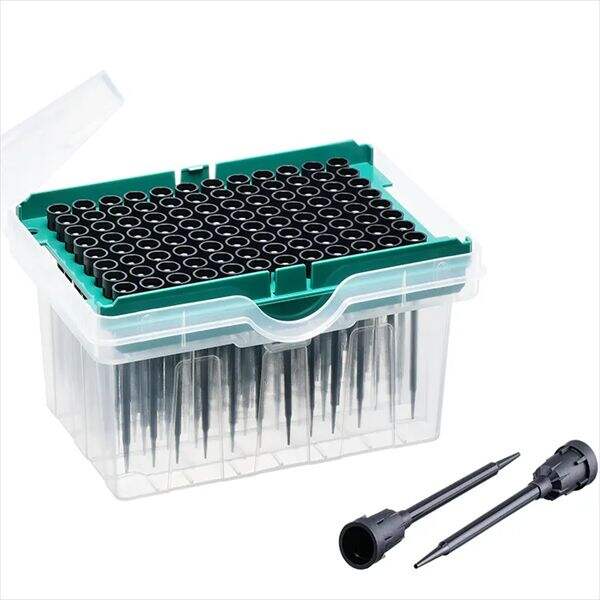How to Choose The Correct Micropipette Tips For Your Experiments
Choosing the right micropipette tip is an important part of ensuring that you get good quality results in your experiments. There are several options out there so deciding on the best option can be an uphill task. Key Considerations in Choosing Micropipette tips
Factors to ConsiderWhen choosing the best micropipette tip for your work, we must take intoaccount a few things so that you obtain "maximum output" using them.
Volume Range: Also important to take into consideration is the range of volumes your experiment will need. It is very important to choose the micropipette tip depending on the volume of lab liquids need accurate measurement for best results.
Chemical CompatibilityDetermining if the micropipette tip is compatible with processed samples to prevent contamination of tips or sample alteration.
Physical Compatibility (different samples may be more dilute, viscous or volatile) Selecting a micropipette tip that can handle these samples with non clogging is an important. Using a tip the size of your sample whole reduces errors in measurements.
Disposable/ Reusable Tips:Another determining factor in the choice among brands is whether it uses disposable tips or reusable ones. Disposable tips provide convenience, time-saving benefits and less risk of contamination whereas reusable tips keep the costs low but need to be cleaned thoroughly before being autoclaved for reuse. When choosing the right kind of tip for your experiments, you have to consider both cost and time consequences.

Correct loading of your tips is critical to the accuracy and reproducibility of your data. Here are some tips to follow the best practices that will aid you in loading your pipette tips very well.
Step 3- Stable SeatingSecure: Before using a pipette, make sure that thepipetio fits firmly on the end of theripotto, wasting neither too small nor toolarg
No Cross-Contamination: Do not touch the end of the tip with your hands as you will contaminate a sample.
Ensure that all air is removed from the tip by expelling (i.e. dispensing) any remaining material in the pipette shaft before addition to sample;
BUBBLE-FREE LIQUID TRANSFER- No bubbles while liquid is sucked up into the tip
Removal of Excess Liquid: Absorb the liquid with a paper towel from outside the tip before entering it into your sample container.

Despite following best practices, some recurring complaints are related to the use of micropipette tips. It is crucial that these issues are understood and your team knows how to troubleshoot it as well. Some typical problems and the troubleshooting steps to solve those issues as follows:
Leaking tips: If liquid is seen leaking from the tip, verify that it fits correctly on the pipette by feeling for a sealing `pop'. If this happens, it is likely because the tip was clogged or calking at some point in its life, perforated like a can lid. The seal might also be cracked and the whole assembly needs to be replaced on our own dime."
Care Tips: A clog may prevent proper measurement. Remove one tip and soak a few seconds in ethanol or distilled water, purge the liquid and try again.
Varying Quantities: Double-check the placement of the pipette tip to avoid motion and that it corresponds with needful volume limits for your analysis.

Micropipette tips come in several different sizes and shapes designed to suit the wide variety of laboratory needs on the market. Following are some of the generic types in which micropipette tips exist.
Filtered Tips - As filtered tips consist of a hydrophobic membrane and polyethylene fiber pre-filter, they block aerosol escape of infectious substances.
Low Retention Tips: To minimize sample loss, these tips prevent samples to stick on the walls so that it provides consistent and precise pipetting.
Extended Length Tips - Best for those difficult sampling situations where you may have to hit something deep or fine, the extended length tips offer precision in nearly any perfecture.
Non-Sterile vs. Sterile Tips: Non-sterile tips which are good to use for basic lab/automation uses, sterile tips have a key role in sensitive implementations such as PCR stimulations;
The importance of high-quality micropipette tips to guarantee accuracy and precision
Micropipette tips are essential in ensuring the accuracy and consistency of experimental results by permitting exact measurement of minute quantities. Correct use of tips, together with perfect handling and pipetting results in the same manner if you want to achieve more accurate and precise experimental outcomes. For example, you can use high quality micropipette tips that may give enough reliability for the volume readings whereas using a tip incorrectly will introduce errors and systematic bias into your data.
To sum up, micropipette tips are necessary tools in laboratories to offer accuracy and precision for measuring small volume liquids. Through proper tip selection, pipetting best practices, handling common problems and understanding the importance of high-quality tips that allow for exacting results on any scale (from minuscule to macro), researchers can maintain their accuracy vital in every possible scientific exploration.
High Precision Molding R D Center capable completing all the phases product design, mold design, manufacturing, precise processing, plastic molding, process micropipette tipsbiological verification well as production a large scale.
Importing top-quality raw materials introducing modern equipment ensure stability in quality. CellPro has 100+ micropipette tipsautomated production lines FANUC, ARBURG, ENGEL, TOYO other brand imported injection machines that guarantee quality quantity production.
Built professional gene amplification laboratory micropipette tipsculture laboratory microbiology laboratory, robotic tips verification laboratory etc. can be used to perform one-stop biological testing integrated research creation reagents, consumables, instruments.
products have been verified according ISO9001, ISO14001, ISO13485 micropipette tipsmanagement systems CE and FDA standards.